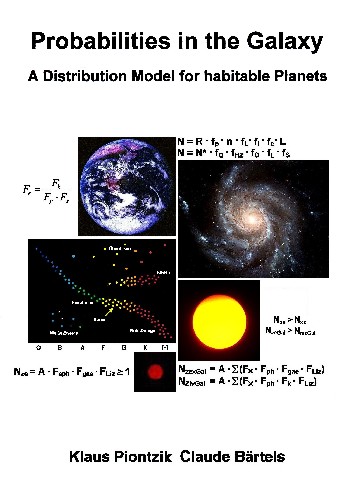| If one wanted to clarify how many
civilizations there are in our galaxy, one would first
look around for earth-like planets in solar-like star
systems - from a first human perspective. As will be
shown later, life, intelligence and civilization could
also have arisen on slightly different planets or star
systems. Which will lead to an extension of the model.
The first discovery of an exoplanet, in a solar-like star
system, was made in 1995 using the radial velocity
method. In the meantime, international studies are being
conducted to detect exoplanets in other star systems
within this galaxy. Various methods are used: Transit method If the orbit of a planet lies so that it passes exactly in front of the star from the view of the earth, these coverings produce periodic subsidence in its brightness. They can be detected by brightness measurements of the star, while the exoplanet passes in front of its central star. These measurements are carried out using terrestrial telescopes such as the SuperWASP or, to a much greater extent, satellites such as COROT, Kepler or ASTERIA. Radial velocity method Star and planets move under the influence of gravity around a common center of gravity. The star moves on shorter distances than the planet because of its larger mass. If one does not look exactly perpendicular to this orbit from the earth, this periodic movement of the star has a component in visual direction, which can be detected by observing the alternating blue and redshift of the star. Astrometric method The movement of the star around the common center of gravity also has components across the viewing direction. These are detectable by exact measurement of its star locations relative to other stars. If the star mass and distance are known, the mass of the planet can also be specified here, since the orbital inclination can be determined. Run-time of light method This method is based on a strictly periodic signal from a central star or a central double star. Due to the influence of gravity, the center of gravity of a circulating planet shifts, resulting in a temporal shift in periodic signals. Direct observation Since 2004 there have also been direct observations of exoplanets through the Hubble Space Telescope and the Very Large Telescope of ESO (European Organization for Astronomical Research in the Southern Hemisphere). |

|
176 sides, of them 64 in Color 76 pictures 11 tables Production and publishing: Books on Demand GmbH, Norderstedt ISBN 9-783-7528-5524-1 Price: 22 Euro |
|